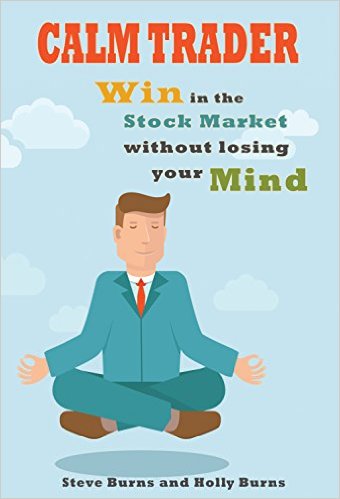“I think investment psychology is by far the more important element, followed by risk control, with the least important consideration being the question of where you buy and sell.”– Tom Basso
The financial markets are strange environments. Unexpected events commonly occur while the sure thing rarely happens. The best times to buy low is usually the time where maximum fear is present and the end of the world is perceived to be right around the next corner. A trader or investor can have an ideal price target where they plan to buy a stock once it pulls back to that lower price either based on a chart price support level or a fundamental valuation but when the price actually drops to their wished for price the fear of a further drop stops them from following their original plan and they sit frozen as their price comes and goes and they are proven right in the long term but could not act when given the opportunity due to emotions. For price to really fall far enough to get to a great price level for a dip buying opportunity or set up a good risk/reward ratio it takes fear and most the time irrational panic. The energy and velocity of the fear that gets prices down to the best buy points causes most traders and investors to be emotionally blocked from buying at those opportune times due to fear that prices will continue to fall. Emotions cost traders a lot of money. Emotions can become so loud at times that a trader can’t hear their trading plan much less follow it.
The other side of emotional errors is for growth stock investors, trend traders, or momentum traders that can’t follow their plan of buying high and selling higher. A growth stock could be in a $95 to $100 trading range for months and they want to buy if it breaks out over $100 since it could have the potential to go much higher if that price resistance is overcome. They want to buy a close over $100 with the hopes that it is a breakout and could trend to much higher prices. But when price gaps up and opens at $102 they don’t buy out of fear, they instead decide to wait for it to pull back to at least $101 or even $100. The next day it opens at $103 and continues to go up to $104 through the day. The fear of buying higher kept the trader from trading the breakout they were given and waiting for a pullback instead that never came. The inability to follow their own trading plan cost them money as they are unable to adjust to what happened correctly and instead miss an opportunity that they wanted to profit from.
What I am talking about in the above examples is what trips up so many traders. The inability to stay calm and follow a prewritten trading plan in real time which is an edge you can develop over the majority of traders. When emotions overcome your ability to trade your plan as price action evolves you have gone from a calm trader to one that is emotionally reactionary. The main reason that the vast majority of traders are unprofitable is that they cannot trade unemotionally. Most traders make their decisions through the filter of their feelings, not based on quantifiable price action or facts and that is why so many lose so much money. While developing a winning trading system that fits your personality and beliefs about the market is crucial. And you must create a trading plan that you can use to execute your winning system in real time. Of course risk management is also crucial to limit your losses and control position sizing so you will survive losing streaks. But without the right might set to stay calm and persevere through setbacks, draw downs, price volatility, and learning to lose you will eventually stop your trading journey.
In trading the biggest obstacle to our success is our internal world of fear, greed, ego, and beliefs. The ability to trade calmly by following your system and plan is a skill few traders ever develop until they have lost an account or two or quit trading altogether. In this book I try to give the reader the information they need to develop the skills to trade in a calm manner instead of getting lost the markets overwhelming sentiment of greed or fear at exactly the wrong time. Your trading will become profitable when you are able to stand outside the markets emotional mood swings and observe the price action as a detached witness and make your decisions for entries and exits based on signals that put the odds in your favor.
You can be the trader using signals while others are being swept away by their emotions. You can be the one making money following trends while others are fighting trends in disbelief. You can be buying during moment of maximum fear while others are selling at the worst times due to fear. You can be locking in profits at the peak moment of greed while others are chasing prices at dangerous levels with terrible risk/return ratios. You can be in the safe boat of logic and reason while other traders are drowning in the deep waters of emotions and ego.
You can have a psychological edge over other traders who use their own emotions, ego, and predictions for signals by simply using probabilities, possibilities, and statistics in an intelligent way.
This is Chapter 1 from my book Calm Trader.

